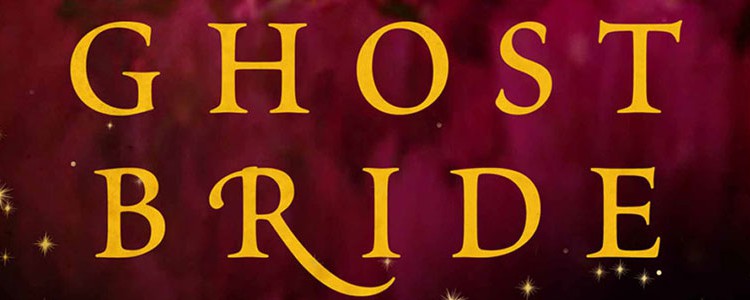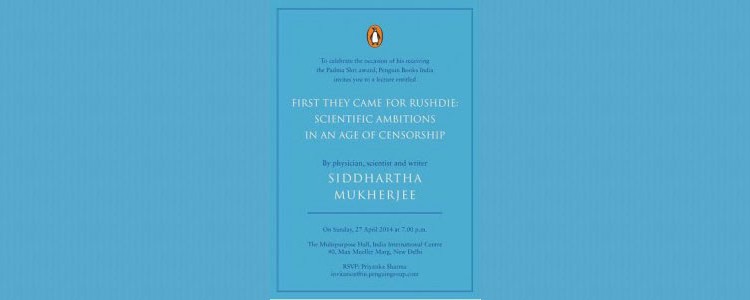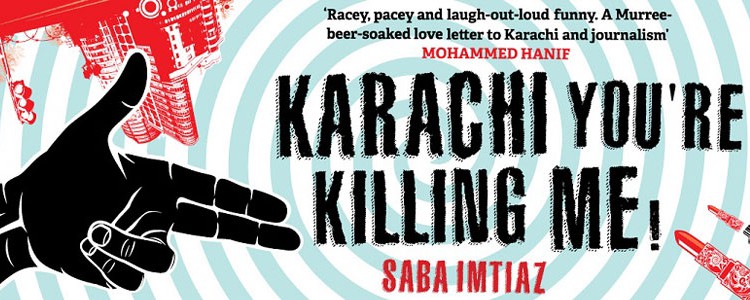( Today my article on literary festivals of India has been published in the Brunch, Hindustan Times. The title in print is called “Booked & Hooked” and online it is ” Your guide to litfests this season”. Here is the link to the online version: http://www.hindustantimes.com/brunch/brunch-stories/your-guide-to-litfests-this-season/article1-1171368.aspx. Meanwhile I am c&p the longer version of the article published.)

“I attend literary festivals to meet authors, to see another dimension to their life, listen to the heated conversations, introduce my four-year-old twin sons to famous people, and inculcate a sense of reading culture in them,” says Umesh Dubey, first-generation entrepreneur who takes his family to attend the Jaipur Literature Festival (JLF) for the entire week.
A literary festival can be defined as a space where writers and readers meet, usually an annual event in a city or as “literature in performance”. Must-have elements include panel discussions with a healthy mix of new and seasoned writers, Q&As with the audience, author signing sessions, workshops related to writing and publishing, book launches, bookstores, a food court, and entertainment in the evenings. And – hopefully also – intellectually stimulating conversations, a relaxed ambience, picturesque setting, good weather (no dry days!), and networking possibilities.
In India, literary festivals came into vogue with the astounding success of Jaipur Literature Festival, which began in 2006 . The timing was right, soon after the Christmas holidays/ winter break, in January, when Rajasthan is a favourite tourist destination. To organise a festival in the Diggi Palace Grounds, chatting with authors most readers have only admired from afar while sipping the hot Diggi chai in earthen cups, basking in the warm winter sun, listening to crackling good conversations and at times heated debates, and as darkness descends, preparing to hear the musicians who will perform… it made for quite a heady experience. And if at any point you get weary of the crowds and the conversations, it is easy to step out for a jaunt as a tourist and explore Jaipur. This basic template has begun to be emulated across the country.
 According to the Jaipur Litfest producer, Sanjoy Roy, the intention is to create “a democratic access system of first-come-first-seated where we treat everyone as our guests and do not make a fuss over VIPs. The colour and design create a sense of an Indian mela.” Of course prior to JLF, India did have a fair share of literary “festivals” like Ajeet Caur’s SAARC Literature Festivals, or those that were organised at the Sanskriti Anandgram in Delhi or even the early editions of the Katha festivals, but admittedly none were on a fabulous scale, nor were they open to the public. According to Maina Bhagat, director, Apeejay Kolkata Festival, “The city is the biggest player in the festival”.
According to the Jaipur Litfest producer, Sanjoy Roy, the intention is to create “a democratic access system of first-come-first-seated where we treat everyone as our guests and do not make a fuss over VIPs. The colour and design create a sense of an Indian mela.” Of course prior to JLF, India did have a fair share of literary “festivals” like Ajeet Caur’s SAARC Literature Festivals, or those that were organised at the Sanskriti Anandgram in Delhi or even the early editions of the Katha festivals, but admittedly none were on a fabulous scale, nor were they open to the public. According to Maina Bhagat, director, Apeejay Kolkata Festival, “The city is the biggest player in the festival”.
So what explains the runaway success of today’s literature festivals? Says poet K. Satchidanadan, “There is a whole urban and semi-urban middle class youth eager to meet authors and listen to them in a festive atmosphere. The publishers are interested in releasing their books there and having their authors on the platform. The authors are interested in meeting other authors and also readers. Cities also get to be on the literary map of India with such celebrations.” Ananth Padmanabhan, senior vice-president, sales, Penguin India, says, “With social media dominating mind space, festivals are a great place to sit back and connect readers to writers; such an engagement opportunity was lacking.” In fact, festival-hopping has resulted in a modern-day phenomenon of the festival junkie: People who move from festival to festival.
Of late the Indian economy may have been in the doldrums but there is no denying that post-liberalisation, more and more people have disposable income, they do want to invest in culture and what better way than to make it a family outing? It is a democratic patronage of the arts. It is also a reflection of how much India is becoming a writing culture rather than a reading culture.
Arshia Sattar, who through Sangam House organises Lekhana Literary Weekend (an extension of the Sangam House international writers’ residency programme that is run outside Bangalore) and is also jury member, DSC Award for Literature 2014, says, “My concern is that we are moving further away from ‘literature’ and closer to writing. I think if we had fewer ‘festivals’ and if they had a focus rather than being all things to all people (which is probably what their sponsors want in terms of ‘footfalls’) . . .we might see people stepping out to literary events with dedication.”
Thomas Abraham, CEO, Hachette India, says, “There is not a single real benefit any festival brings to a publisher. And there are a number of cons – it costs a lot to get your author up there for almost no returns on investment, and zero promotional benefit. Yes, if you switch off the business aspect, for the audience it’s a great platform to see your favourite authors, and for authors a great platform to cross-commune with other writers. For editors it’s a good networking and ideas engagement opportunity. But in terms of sales or author brand building, go back to every single festival and put down the authors and their titles and see the impact of either media coverage or sales, and you’ll see not one has moved beyond their earlier levels. Some very successful (read great stage performances) sessions do result in immediate brisker sales at the venue bookshop, but even those are minimal – anything between 30 copies to 100 copies.” Adds Diya Kar Hazra, publisher, trade, Bloomsbury, “There are so many literary festivals these days – sometimes two or three in one city. The writer is expected to do more than just write these days – they blog, they tweet, they have pages on FB. They appear at festivals and events reading from their books and having conversations with fellow writers. The reader–writer relationship has changed, as a result. Authors are much more accessible than they ever were.”
Author Shovon Chowdhury who released his debut novel, The Competent Authority, earlier this year says that attending literary festivals “feels good. You feel special. I’m not jaded yet, so I enjoy it. I also love meeting lots of interesting people, including some super-intelligent ones. It gives me a dose of much needed perspective and humility. Plus there’s free meals.”
An attractive feature of a literary festival is the free entry. This requires the festival management to scour for private sponsors, funds and collaborations that will help in putting together the extravaganza and these could be either in money or in kind. In many case, corporate house are willing to assist with sponsorship for the brand visibility and media coverage. Recently tourism departments and state governments have partnered with festivals which is understandable given the positive impact festivals can have on the local economy. For instance, in a dipstick survey the JLF management did last year, it was estimated that approximately Rs 20 crores of additional spend could be attributed to JLF in Jaipur on account of accommodation, restaurant and shopping. Even this is set to change. The inaugural edition of the Pune International Literature Festival had ticketed entry. Comic Con too proposes to sell tickets in 2014.
Much of the success of the festivals depends on the programme created, parallel sessions, selection of the moderators and if necessary, themes selected. It is also heavily dependent upon the curation, storyboard to the chemistry between the panelists. Altaf Tyrewala, Director, Chandigarh Literature Festival, says “The organizers and I were struggling to think of how CLF could be different from other literary festivals. We realized that in the circus, we often lose sight of the book, the very foundation of literature! So we decided that CLF would showcase the book, and nothing but the book. We decided to let active literary critics nominate that one book that had stayed with them over the past decade. There was a general agreement on what constituted a good book. Naturally, the discussion between the author and the nominating critic was focused entirely on the book in question. It made every session riveting, and more importantly the invitees realized that their presence was crucial to the festival’s format.” It helps to do some thinking in advance to avoid embarrassing incidents as happened at a recently concluded festival. The moderator was informed just before stepping on to the stage that the authors lined up were commercial-fiction authors. The response, the moderator shuddered and said, “I would never read such authors!”
The buzz around festivals is tremendous. But the bubble may soon burst as has happened with book launches. People will weary of them if they happen too often. They will lose their charm for various reasons. As writer Ravi Subramanian points out, “The divisions between the literary and commercial authors are becoming apparent at these festivals.” Second, most of the festivals are conducted predominantly in English, though slowly this too is changing, to reflect and represent the local languages and the international participants. There are writers who have begun to feel bored and disillusioned with these festivals that often sustain and strengthen the hierarchies among writers, dividing them into “stars” and ordinary writers. Even the most ordinary Indian English writers acquire “stardom” while the best of language writers are often time-fillers invited most often to show that they too are represented.
Over the years the festivals have come to align themselves before and after the December/Christmas holidays, making it easier for authors to mark their presence at more than one event. The length and dates of the festivals are also determined by collaborating partners. In fact Surya Rao, director, Hyderabad Literary Festival, says, “We avoid a clash of dates with other major lit festivals because we check the dates of other fests. The Jaipur fest happens to be the closest to us.”
Maybe Indian festival organisers will collaborate with each other as happens in other countries like Australia.
A possible “classification” of literary festivals.
There are so many literary festivals being organised in India that one has to create some sort of “classification”. For instance, festivals that have stood the test of time of a minimum period of three years, grown in popularity (as measured by the increasing audience participation), established a brand in their name and proven to be sustainable in terms of the sponsorship would probably be at the top of the list. These would be the major milestones in the festival calendar – Jaipur ( Jaipur Literature Festival), Calcutta (Apeejay Kolkata Literary Festival and Kolkata Literary Meet) , Chennai (Hindu Lit for Life), Mumbai (Kalaghoda, Times of India festival), Hyderabad Literary Festival and the Sahitya Akademi’s Festival of Letters.
Then there is what could be termed as a “sub-genre” – that is, equally strong brands, dealing with genres of literature which are not necessarily given sufficient space for intense engagement, such as Bookaroo (children’s literature) organised in Delhi and in Pune (in collaboration with Sakaal Times), ComicCon (comics and graphic novels), Samanvay (Indian languages) in collaboration with the India Habitat Centre,, Cultures of Peace: Festival of the Northeast (Women and Human Rights) organised by Zubaan, Poetry with Prakriti (poems), Mussoorie Writers Festival (mountain and travel writing) organised by Stephen Alter and Lekhana (a long literary weekend).
Finally there are the relatively new festivals that are as yet to establish themselves, but people are already familiar with them – Bangalore, Kasauli, Shillong, Agra, Lucknow, Benaras, Patna, Bhubhaneshwar, Chandigarh, Pune, and Kovalam. And there are still more being organised.
 In 2014 Amit Chaudhuri published two books – Telling Tales ( a collection of essays) and Odysseus Abroad ( a novel). Some of the other notable literary engagements were delivering the Infosys lecture “The Origins of Dislike” (http://www.infosys-science-foundation.com/amit-chaudhuri-lecture.asp) , Guest Director of The Times Cheltenham Festivals Literature 14, co-organising the second edition of The University of East Anglia India Creative Writing course in Calcutta ( https://www.facebook.com/pages/UEA-launches-International-Creative-Writing-Course-in-India/473787526006225?fref=ts ), a symposium on literary activism ( Anjum Hasan, “On Recovering the Literary through Literary Activism”, December 26, 2014 http://www.caravanmagazine.in/vantage/recovering-literary-activism ), contributor to Granta:130 focussing on India ( The first volume on India was Granta:57. Amit Chaudhuri is the only Indian author present in both issues, seventeen years apart). All these literary engagements are apart from his regular teaching assignments and musical performances.
In 2014 Amit Chaudhuri published two books – Telling Tales ( a collection of essays) and Odysseus Abroad ( a novel). Some of the other notable literary engagements were delivering the Infosys lecture “The Origins of Dislike” (http://www.infosys-science-foundation.com/amit-chaudhuri-lecture.asp) , Guest Director of The Times Cheltenham Festivals Literature 14, co-organising the second edition of The University of East Anglia India Creative Writing course in Calcutta ( https://www.facebook.com/pages/UEA-launches-International-Creative-Writing-Course-in-India/473787526006225?fref=ts ), a symposium on literary activism ( Anjum Hasan, “On Recovering the Literary through Literary Activism”, December 26, 2014 http://www.caravanmagazine.in/vantage/recovering-literary-activism ), contributor to Granta:130 focussing on India ( The first volume on India was Granta:57. Amit Chaudhuri is the only Indian author present in both issues, seventeen years apart). All these literary engagements are apart from his regular teaching assignments and musical performances. Odysseus Abroad is in a class of its own. It is better appreciated if familiar with some of Amit Chaudhuri’s writing. The novel is experimental—his experiments in literature, fascination with language ( English and Bengali), playing with words and meaning, hidden jokes in structure and of course the “journey” of the protagonist. The novelist Amit Chaudhuri has access to a number of literary gatherings, student conferences and is the bridge between two cultures — English Literature and Indian Literature. By being at home in two distinct cultural and geographical locations — India and Great Britain, there is a sense in Odysseus Abroad that Amit Chaudhuri is attempting to make a “bridge” between the high culture of classical literature and the low culture of the mundane and dull lives of ordinary folks. In an interview he gave to he Hindu in Nov 2014 he said, “plot is an overrated device”. ( http://www.thehindu.com/features/magazine/i-am-drawn-to-the-quirky-by-vaishna-roy/article6555245.ece )
Odysseus Abroad is in a class of its own. It is better appreciated if familiar with some of Amit Chaudhuri’s writing. The novel is experimental—his experiments in literature, fascination with language ( English and Bengali), playing with words and meaning, hidden jokes in structure and of course the “journey” of the protagonist. The novelist Amit Chaudhuri has access to a number of literary gatherings, student conferences and is the bridge between two cultures — English Literature and Indian Literature. By being at home in two distinct cultural and geographical locations — India and Great Britain, there is a sense in Odysseus Abroad that Amit Chaudhuri is attempting to make a “bridge” between the high culture of classical literature and the low culture of the mundane and dull lives of ordinary folks. In an interview he gave to he Hindu in Nov 2014 he said, “plot is an overrated device”. ( http://www.thehindu.com/features/magazine/i-am-drawn-to-the-quirky-by-vaishna-roy/article6555245.ece )



















